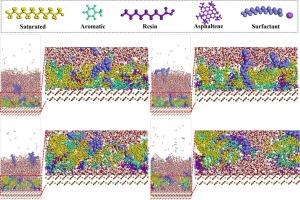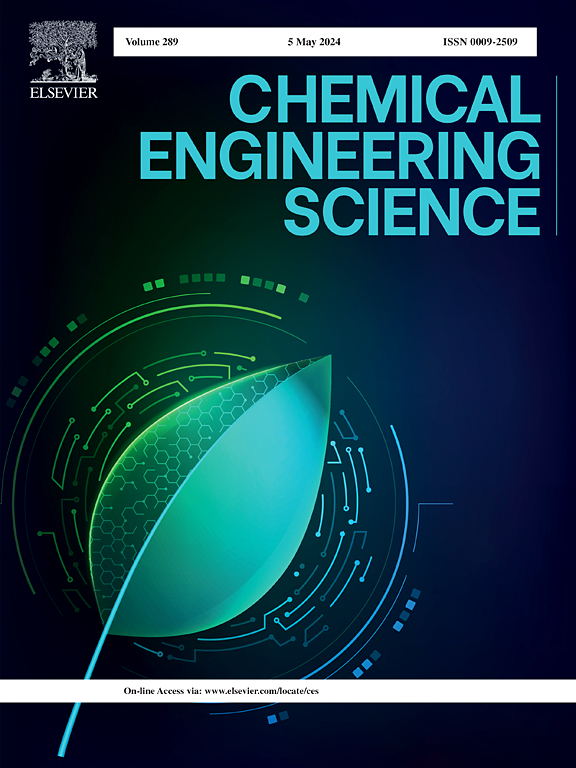Peeling off mechanism and influencing factors of adhesive oil film in ultra-deep tight reservoir − insights from molecular dynamics
IF 4.1
2区 工程技术
Q2 ENGINEERING, CHEMICAL
引用次数: 0
Abstract
Molecular dynamics simulations were conducted to investigate the microscopic interactions among rock, crude oil, and surfactants, elucidating the fundamental principles governing adhered oil film detachment in ultra-deep reservoirs. The study systematically analyzed surfactant-induced oil film peeling dynamics through three perspectives: (1) interfacial adsorption behavior, (2) energy evolution during peeling off, and (3) component-dependent peeling mechanisms. Furthermore, temperature, pressure, and surfactant concentration effects were quantitatively evaluated. Surfactant intervention triggered crude oil peeling off from rock surfaces, resulting in oil droplet dispersion within the water phase. The peeling process progressed through four characteristic phases: rapid acceleration, sustained growth, stabilization, and asymptotic equilibrium. This staged behavior originated from competitive surfactant interactions at both the oil–water interface and rock surface. Structural simplicity governed peeling efficiency, with saturated hydrocarbons (94.15 % removal at 3000 ps) significantly outperforming polar resins and asphaltenes (52.9 % residual). Thermal activation played a critical role: below 393 K, suppressed molecular mobility limited peeling off effect (lower than 40 %), whereas elevated temperatures (>413 K) promoted water channel penetration and enhanced peeling off efficiency (over 80 %). Pressure variations (42–62 MPa) exhibited negligible impact (<10 % peeling off efficiency fluctuation). Increasing surfactant concentration (0.0–10.0 wt%) exponentially reduced oil-rock interaction energy from −20000 kJ/mol to −12000 kJ/mol. Enabling removal 85 %-90 % oil within at concentrations of 5.0 %-10.0 %. These findings establish a mechanistic framework for designing surfactant-enhanced waterflooding systems in ultra-deep tight reservoirs.


求助全文
约1分钟内获得全文
求助全文
来源期刊

Chemical Engineering Science
工程技术-工程:化工
CiteScore
7.50
自引率
8.50%
发文量
1025
审稿时长
50 days
期刊介绍:
Chemical engineering enables the transformation of natural resources and energy into useful products for society. It draws on and applies natural sciences, mathematics and economics, and has developed fundamental engineering science that underpins the discipline.
Chemical Engineering Science (CES) has been publishing papers on the fundamentals of chemical engineering since 1951. CES is the platform where the most significant advances in the discipline have ever since been published. Chemical Engineering Science has accompanied and sustained chemical engineering through its development into the vibrant and broad scientific discipline it is today.
 求助内容:
求助内容: 应助结果提醒方式:
应助结果提醒方式:


